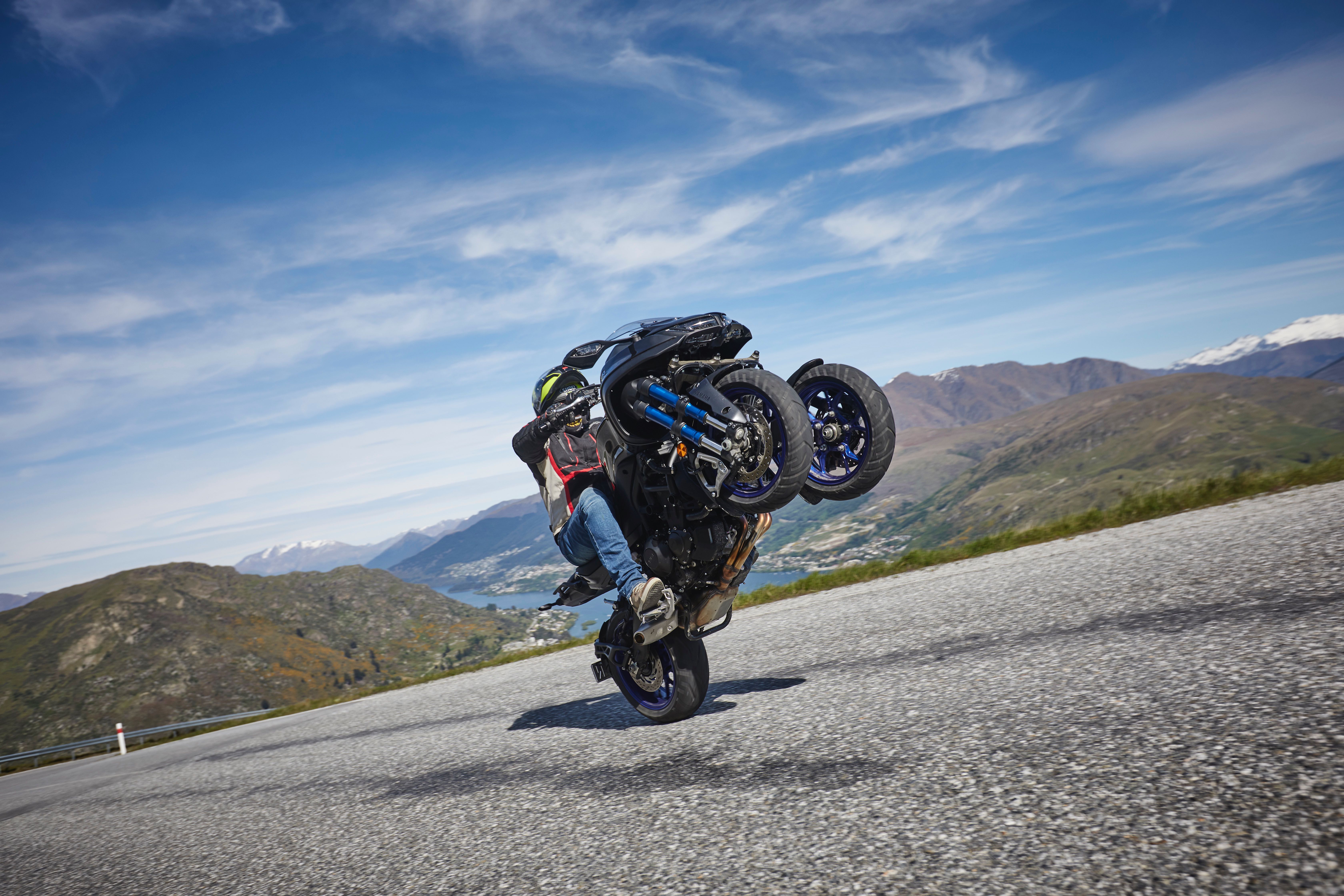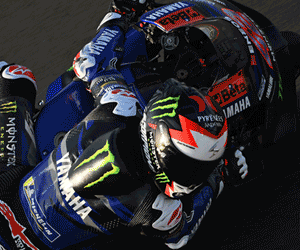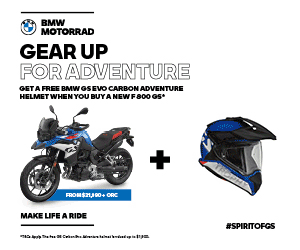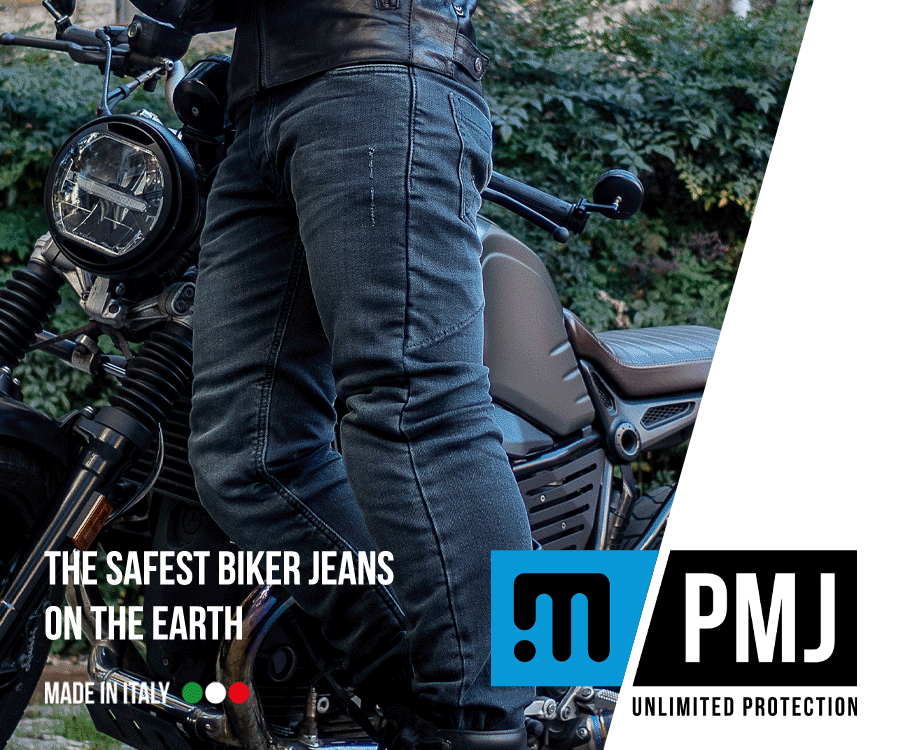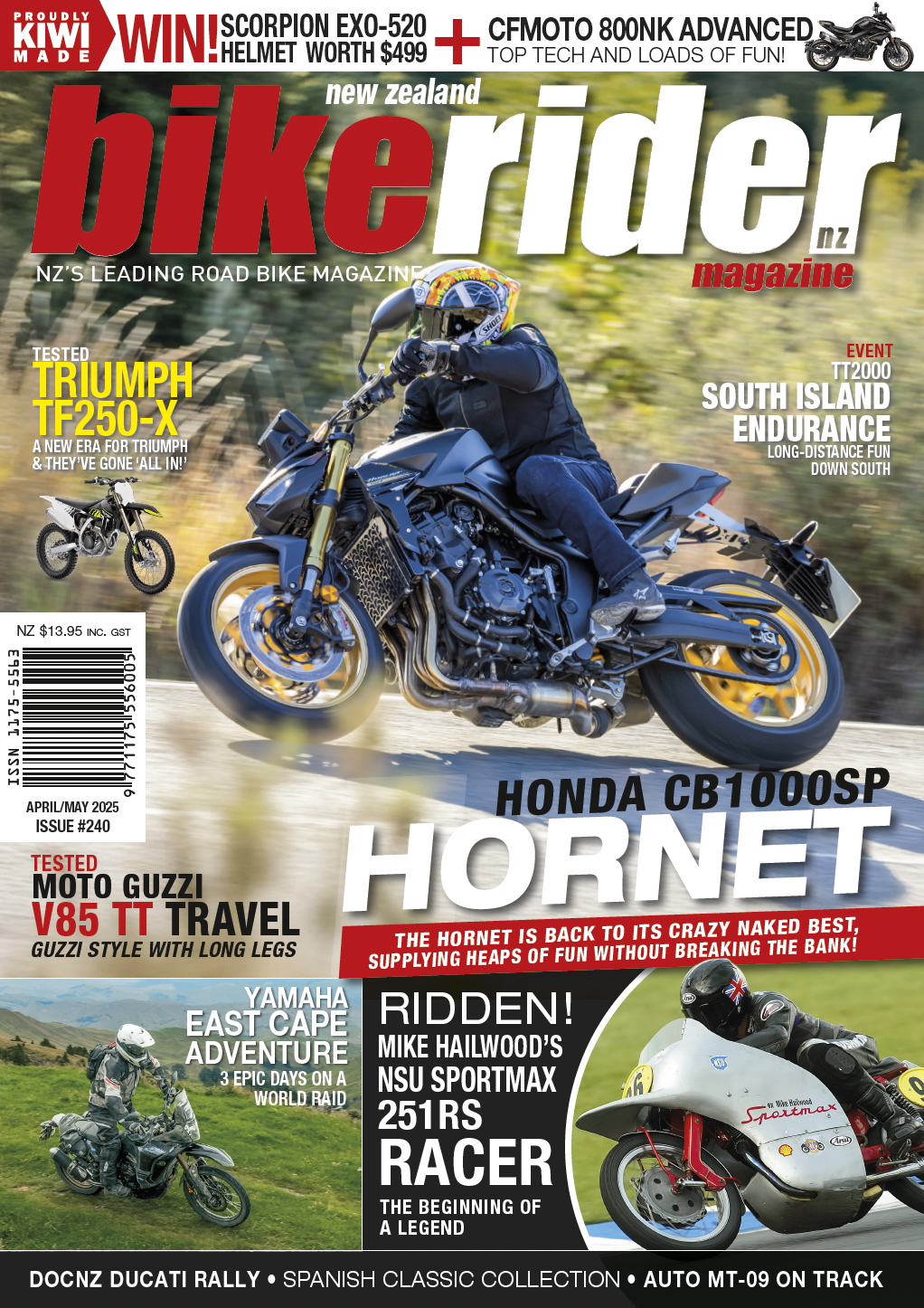Is More, More?
Paul headed to Queenstown for the Australasian release of Yamaha’s latest three-wheeler, the Niken. But does adding an extra wheel upfront make the Niken a better motorcycle or is it a motorcycle at all?
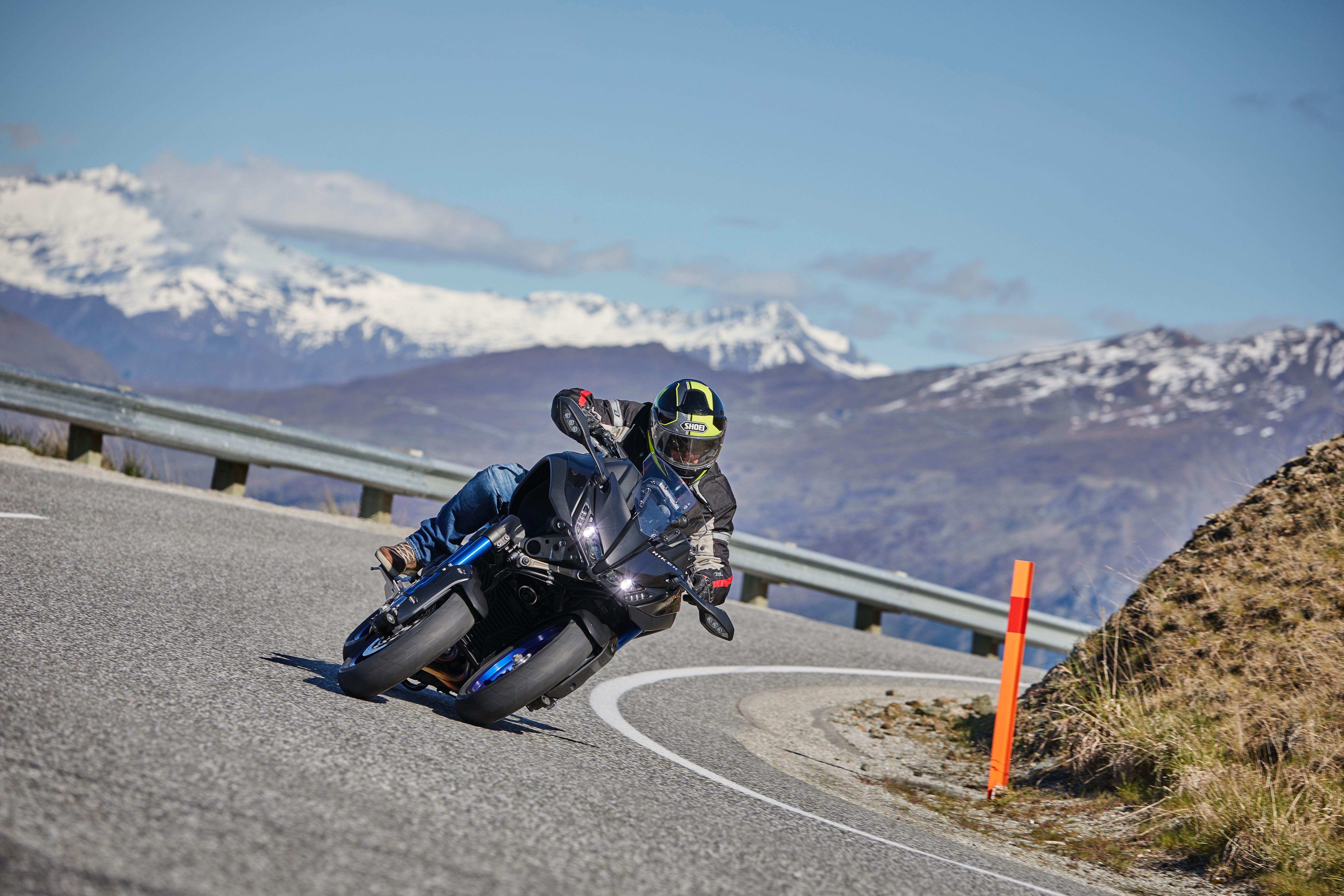 The Crown Range Road is one of the most spectacular biking roads in the country, especially at the time of year when the tourists haven’t completely invaded yet, and the snow has all but receded for another year.
The Crown Range Road is one of the most spectacular biking roads in the country, especially at the time of year when the tourists haven’t completely invaded yet, and the snow has all but receded for another year.
But would I rather be riding some other motorcycle than a three-wheeled, MT-09 derived Yamaha Niken? Well, after a spirited journey to Wanaka and back followed by a number of other incredible roads around Queenstown, I’d be hard pressed to want to swap the keys.
Why?
I keep seeing the comment in posts relating to the Niken, “Why answer the question nobody has asked?” Well, the question isn’t exactly what you expect it to be. Yamaha actually did a major survey, and discovered 65% of European motorcycle license holders didn’t actively own or ride a motorcycle and many car drivers wanted to try motorcycling but didn’t because safety was their main concern. So the question was, how do we reach out to this missing market. Their answer was, add another wheel at the front giving increased safety from front-end slides while also making the bike easier to ride than a regular two-wheeler.
Using the stunning MT-09 as a donor, the Niken retains the 847cc triple-cylinder powerplant that’s been so well received since its launch in 2014. Power is the same at 115hp @ 10,000rpm while torque sits at a healthy 88Nm @ 8,500rpm. The gearing has been lowered to cope with the additional weigh the extra wheel and suspension brings, but despite the Niken weight 263kilos fully-fueled and ready to run, that weight doesn’t make itself apparent at any time other than perhaps lifting it off the side stand when you’ve been a dick and parked on a camber. Otherwise, the Niken is easy to manage and a breeze to ride at slow speeds.
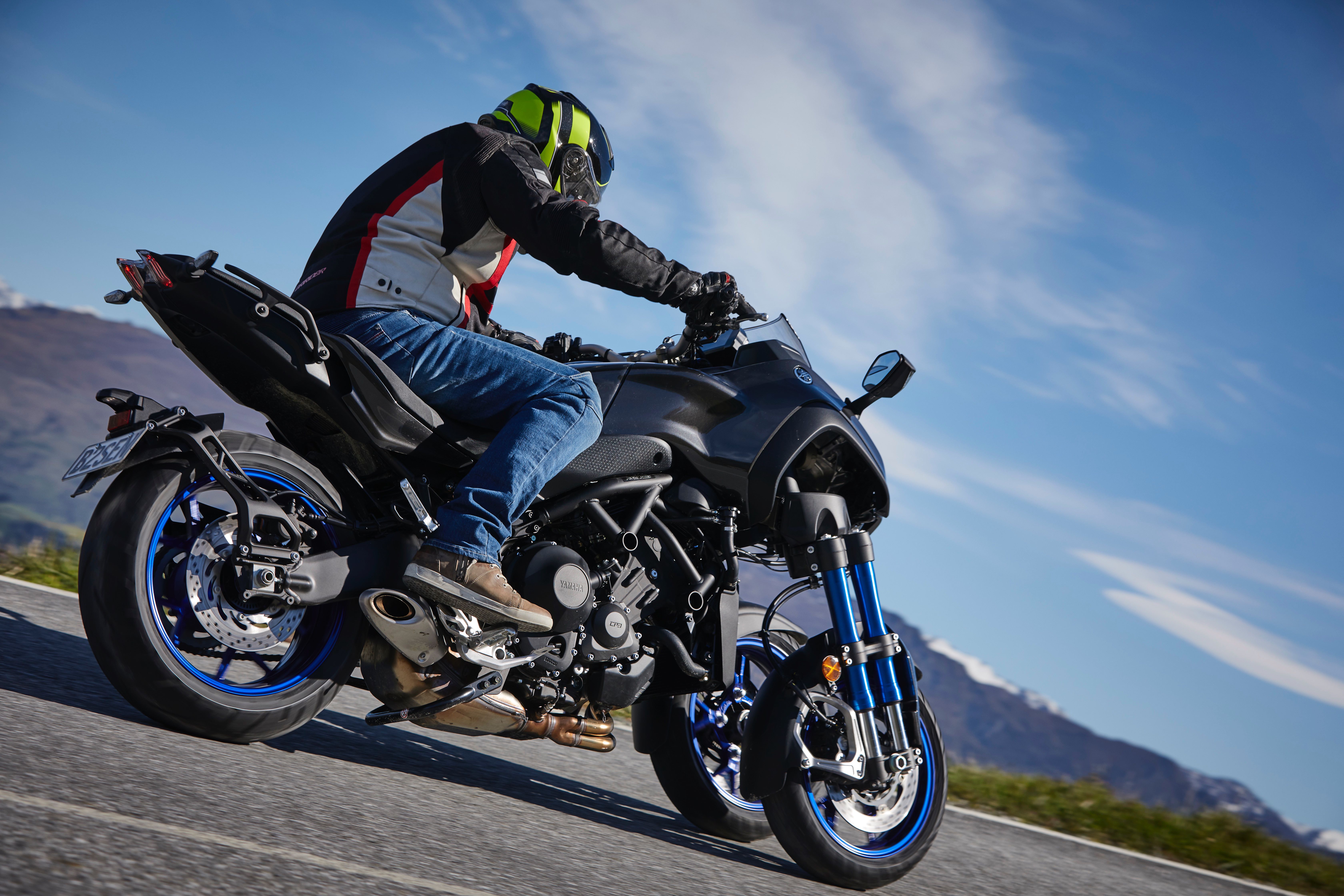 How’s It Work?
How’s It Work?
There’s plenty of wizardry going on underneath the front of the Niken, but in short, there’s two sets of two forks, with one simply being a slider or guide. A tie-rod means the wheels follow tighter tracks on the inside when turning as per the Ackerman principal of 1818, but the forks also needed to lean, so a parallelogram system was added along with a lean angle axle to make sure both wheels are aiming where they should be while the motorcycle is leaning and turning. Interestingly, the fork legs are mounted outside of the wheels to increase lean angles (the Niken will reach 45degrees of lean which is more than enough!) while also giving a wider track.
The engineers wanted the Niken to have a perfect 50/50 weight distribution when the rider was onboard, so the saddle was moved further back as were the handlebars. It makes for a relaxed riding position, although the pegs are still high enough to be sporty while the saddle is wide at the rear for comfort and slim at the front for action.
The dash is standard MT-09, with the LCD screen offering a gear change indicator, traction settings, power mode, bar-type rev counter and multiple trips. Fuel seemed to average 6litres per 100km which should see the 18litre tank get you around 300kays before needing to park it up.
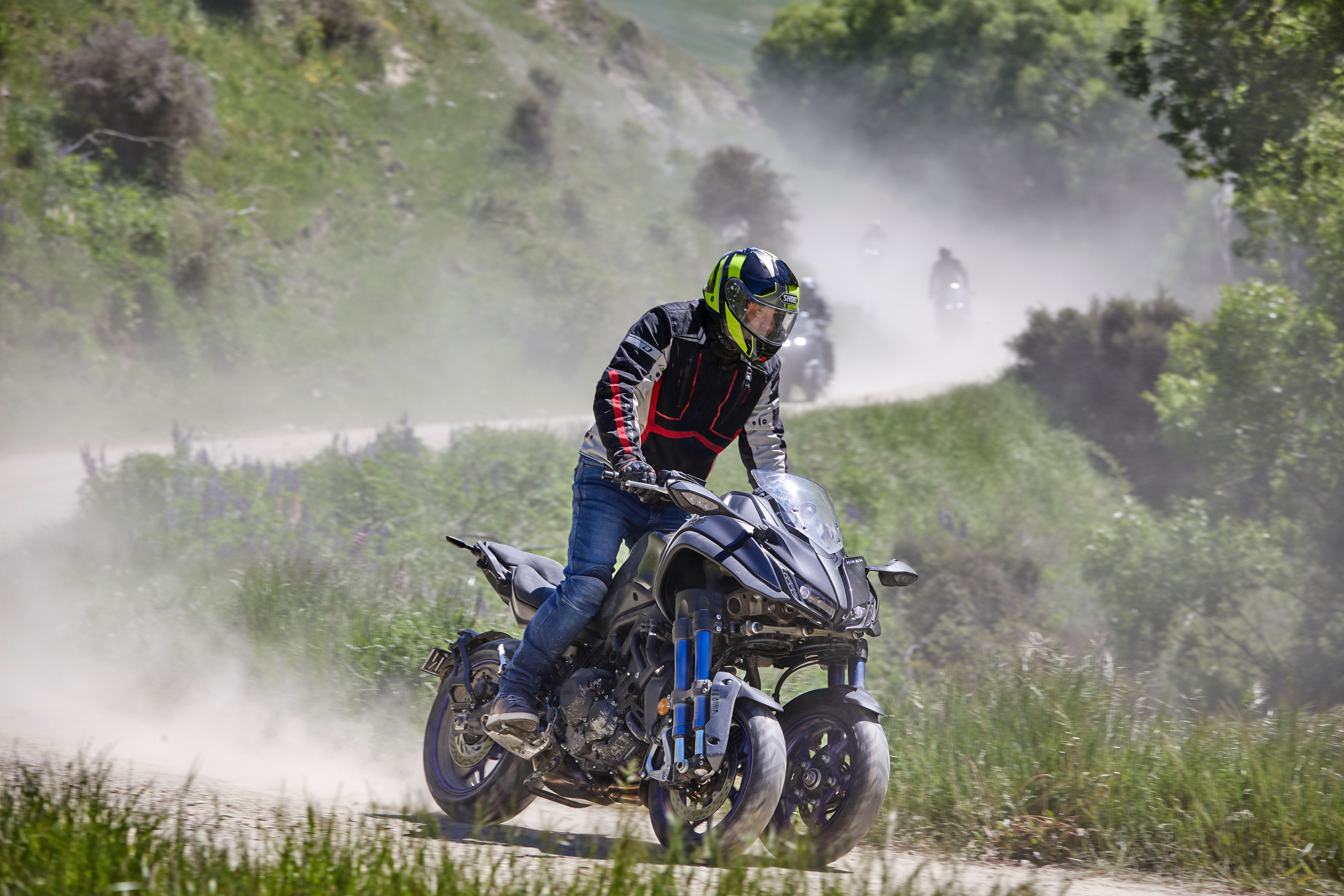 Cornering Re-invented
Cornering Re-invented
With up to an additional 45% more grip from the front, it’s the corners where the Niken really excels. Braking can be left to the last minute and some before throwing the Yamaha in with increased abandon that only a promise of more grip is going to give. The addition of an extra wheel takes the fear of the front wheel slipping and relegates it to the back of the helmet while the front concentrates on braking later next time and getting on the gas earlier, making the most of the excellent traction control systems. In testing with the twin wheels added to sportier machines (read MotoGP bikes), the added wheel showed an increase of 5km/h mid-corner, although the advantage was soon lost with the additional weight needing to be pushed down the straight. But it showed they were onto something.
Mid-corner and the Niken feels balanced and secure, with the prospect of a tightening line only needing a bit more counter-steering to increase the lean angle and getting the two wheels tracking tighter. And if you need to scrub more speed? Well, the additional grip lets you carry the brakes later and deeper into a turn than you’ve ever thought possible. Yep, it’s really that good.
So what’s the downside I hear you ask? And how will it help me as I’m a returning rider (or a new rider) and don’t want to be dragging pegs?
Well, the reality is that the addition of the front wheel has increased the safety margins, meaning the Niken will offer you more protection from things going unexpectedly in a corner. Gravel, slippery lines, wet weather. All these things can make an inexperienced (and even experienced) rider uncomfortable. But having two wheels up front makes riding just that bit safer.
As for the downside? Well, the only limitation is your own perception of the Niken and that of your peers. Many motorcyclists will be venomously against a motorcycle with three-wheels without actually trying one. And there’s no denying it does look different. Whether that difference is a good or bad thing is how you look at it. Some will love it, others won’t. But then we shouldn’t be worried about what others think anyway, right?
The Niken is also an incredible piece of engineering, something that the Yamaha engineers should be extremely proud of. If you love great pieces of engineering, then you should probably buy a Niken even if you only parked it in the lounge. How they’ve managed to add all this and make the Niken still feel like a motorbike is beyond me, but they have.
Finally, has adding a wheel taken away the fun? I can categorically say the Niken is one of the craziest machines I’ve ever ridden. Slides, wheelies, corner carving – it’s all within the capabilities of the new Yamaha.
Check out the next issue of Bike Rider Magazine for a full report.
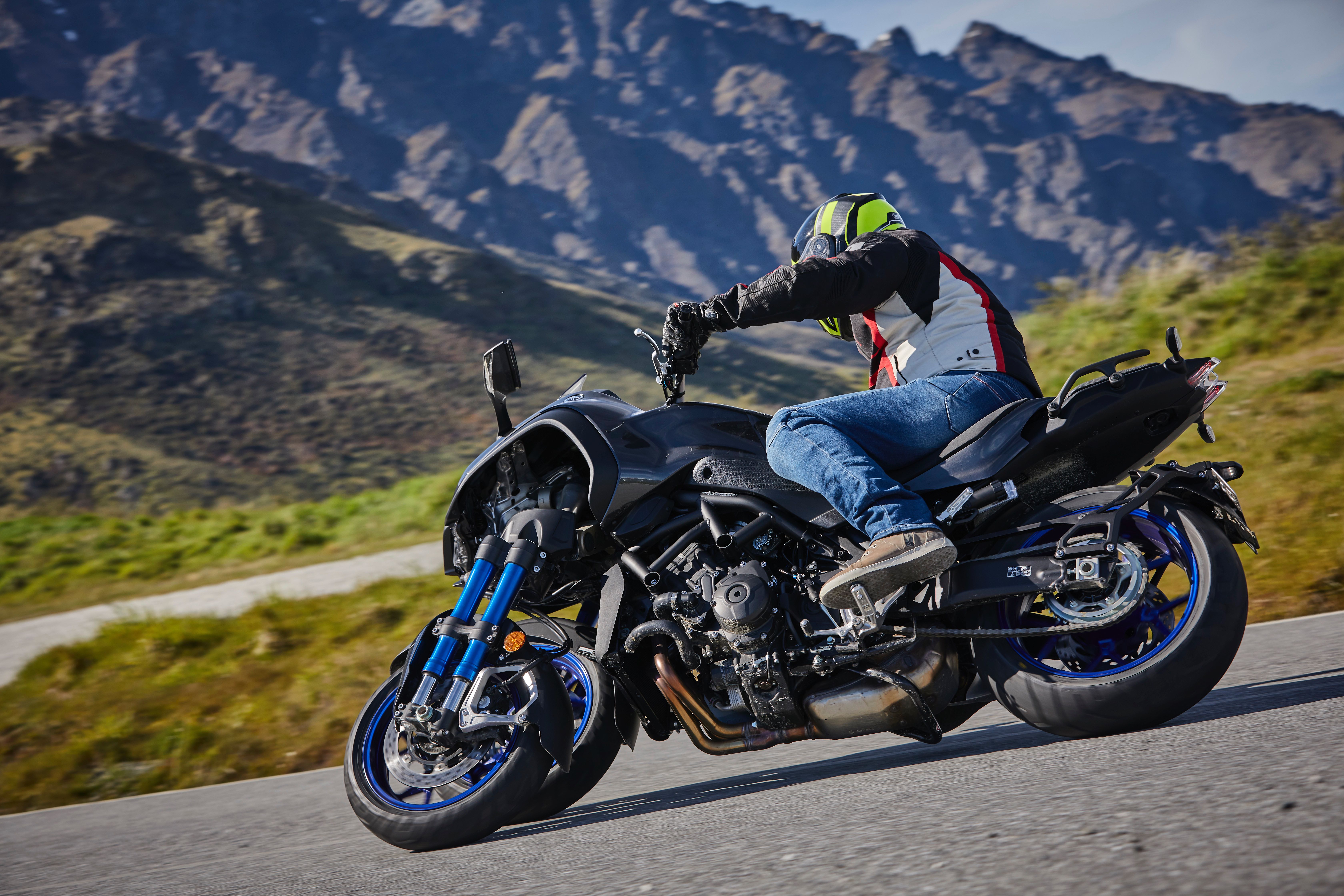 Specifications
Specifications
Price: $23,999 + on roads
Colour: Only one – graphite grey
Width x Height = 2,150 mm x 885 mm x 1,250 mm
Engine type = Liquid-cooled 4-stroke, DOHC, 4-valve
Cylinder arrangement = In-line 3-cylinder
Fuel supply system = Fuel injection

